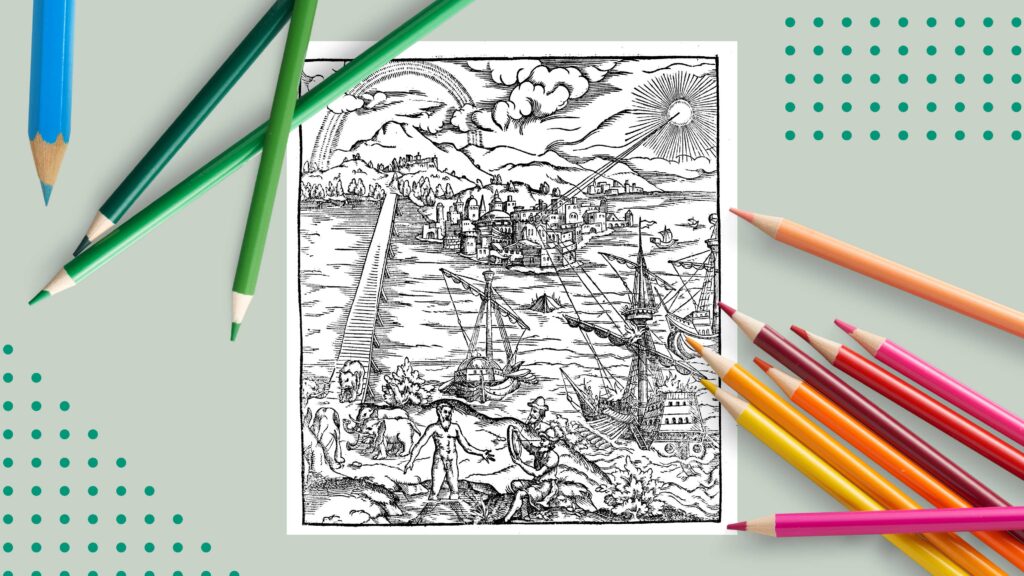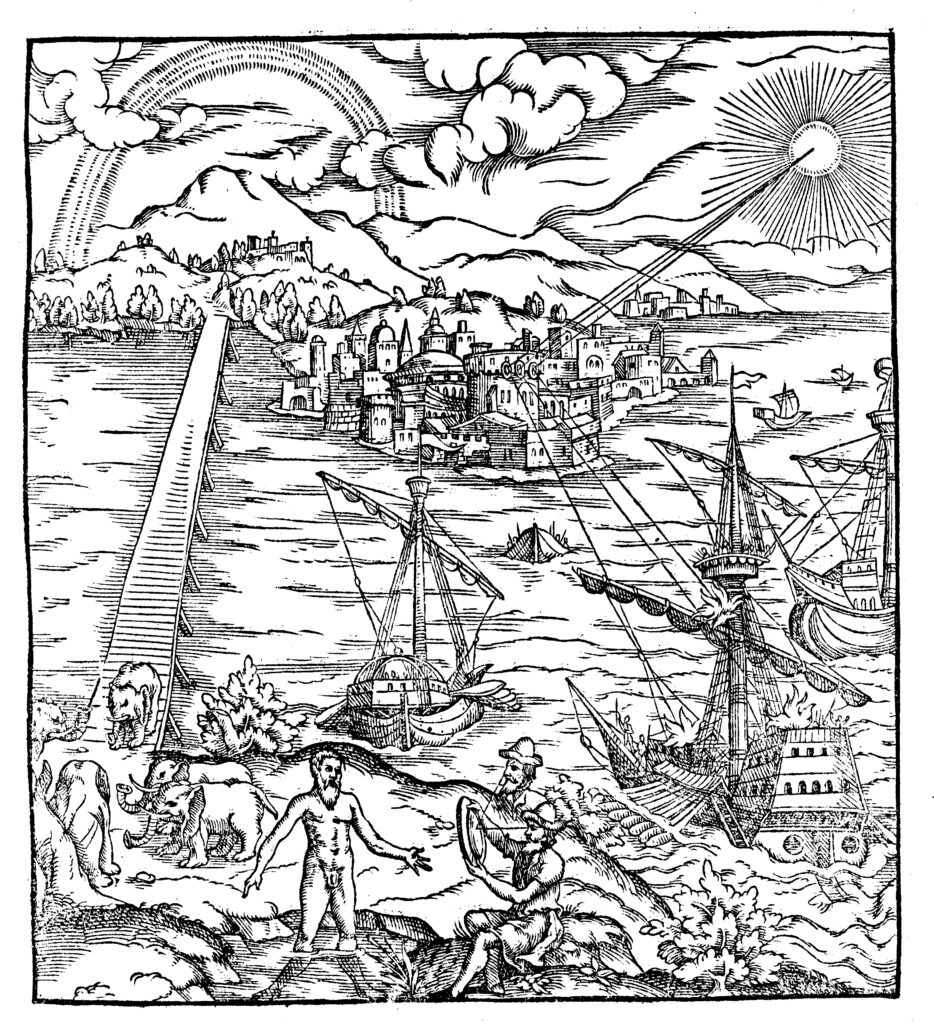
Color Our Collections
Do you like to relax or express your creativity by coloring in images? If so, check out our submission for this year’s Color Our Collections project! Every year the New York Academy of Medicine calls for libraries and archives to contribute historical images from their collections for people to color. The Medical History Center has been contributing to the project since 2018! You can explore all the historical coloring pages from libraries and archives around the world on the Color Our Collections website.
Our Coloring Sheet:
This woodcut originally appeared in a sixteenth-century book called the Opticæ thesaurus, a copy of which can be found in the Medical History Center in Lane Medical Library. This book is a Latin translation of a much earlier work by Ḥasan Ibn al-Haytham (sometimes called Alhazen, or أبو علي، الحسن بن الحسن بن الهيثم), and which was written in the early eleventh century. This is a book about vision and optics. In it, Ḥasan Ibn al-Haytham argued that vision occurred by light entering the eye from outside – an argument that ran counter to some widely accepted classical Greek theories of vision.
This woodcut from the 1572 Latin translation features many examples of ways in which light behaves. Included in the image is a rainbow, an instance of the refraction of light in water, and a fanciful imagining of the military use of mirrors to redirect sunlight and set enemy ships on fire.
Recently the Medical History Center digitized the entire Opticæ thesaurus, which can now be found in the Stanford Digital Repository.
Later this year, the Opticæ thesaurus will be displayed at the Getty Center in Los Angeles as part of an upcoming exhibit called Lumen: the Art and Science of Light. That exhibit is part of a broader collaboration among California museums and archives called Pacific Standard Time Initiative which will explore connections between art and science.
For more information about the Opticæ thesaurus or any of the other treasures in the Medical History Center’s rare books collection, please contact Dr. Drew Bourn at: dbourn@stanford.edu.
